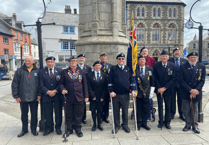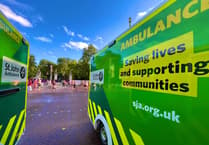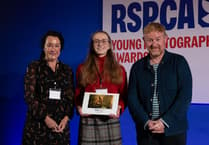Launceston Stamp Club recently held its December meeting at Ladycross.
The chairman welcomed the 15 members present and the dealer for the evening Kevin Webb all of whom had braved uncertain weather to attend.
The display was provided by Viv Sandercock, who showed items from his collections of Guatemala and Honduras in Central America.
Viv explained that he had worked at one stage of his career in the Republic of Honduras and after he left he thought he should collect a Central American country and settled on Guatemala mainly because it had issued the least number of stamps of any of the other countries but later he had diversified and started to collect the other Central American countries including Honduras.
Viv gave a brief ‘potted’ history of the two countries before speaking about the first of the countries to be shown – Guatemala. The first page showed examples of bogus stamps which were produced by the forgers of the time keen to take advantage to deceive stamp collectors because of the long delay between the Guatemalan authorities announcing the introduction of stamps in 1867 and the actual issue of the stamps in 1871. The display then continued with the issued stamps of 1871 through to 1886 when a revenue stamp introduced to raise money towards the building of a railway was overprinted for postal use in a deal between a British engineer in Guatemala and the authorities whereby the engineer would pay for the next issue of stamps provided that he was able to have the remainders of the overprinted issue. The issue paid for was the Large Quetzal issue of 1886 and the next several pages showed this issue in some detail together with its many provisional overprints which became necessary due to postal rate changes and sometimes running out of particular values. Included were examples of overprint varieties both double and inverted. The next section consisted of a specialised selection of the Waterlow bi-coloured pictorial definitives of 1902 which were in use up until the 1920’s. Examples were shown of the many different perforation varieties and shades. This was followed by the many provisional overprints that were applied to the Waterlow issues because of changing postal rates and stamp shortages including forgeries and errors.
At this stage there was a break in the proceedings to enjoy mince pies and cream served by Evelyn Sandercock and David Hatwell.
The second part of Viv’s display on Honduras started with their first issue in 1866 and the later overprints and showed examples of the genuine stamps and forgeries both of the stamps and overprints. Next came a comprehensive selection of the so called ‘Seebeck’ issues from 1890 to 1895. These again were the subject of a deal between the government and a Nicholas Seebeck who was a director of an American printing firm and who agreed to provide the stamps free of charge each year on the condition he retained the remainders and printing plates for supplying stamps to collectors. There were examples of imperforate plate proofs and colour trials as well as the issued stamps. Viv stated that covers of the first issue and the Seebeck issue were scarce. Viv’s display continued with the 1896 President Arias and 1898 Locomotive issues again showing genuine and forged examples. The display was rounded off with the Apollo 11 commemorative issue of 1969 with the colourful stamps, miniature sheets, commercial covers and the later overprinted varieties.
At the end if Viv’s display he was thanked and presented with the club’s certificate of appreciation by long standing club member Mike Tooley.
Launceston Stamp Club meets on the second Thursday of every month at 2.30pm at the Sunday School Room, Yeolmbridge Methodist Church, Ladycross.
If anyone is interested in stamps come and join the club. New prospective members welcome.




